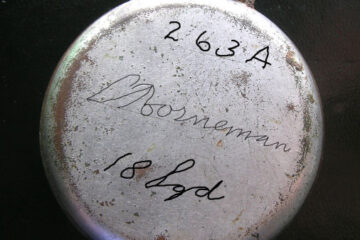SS Van Heemskerk was a freighter built by N.V. Nederlandsche Scheepsbouw-Maatschappij. The ship of 2,996 Gross register tonnage (GRT) was launched 31 August 1909 and delivered for operation by Koninklijke Paketvaart-Maatschappij (KPM) in the Dutch East Indies trade.
Van Heemskerk was one of twenty-one KPM vessels that took refuge in Australian ports after the fall of Java that Dutch officials requested be put into service for the war effort. The ship, among others, was chartered by the Chief Quartermaster, U.S. Army Forces in Australia (USAFIA) on 26 March 1942.
Two months later Van Heemskerk was one of four Dutch ships of Convoy ZK.8, the others being MS Bantam, SS Bontekoe and MS Van Heutsz, under escort of HMAS Arunta and HNLMS Tromp departing Sydney for Port Moresby with 4,735 troops of the Australian 14th Brigade embarked. The ship continued transporting troops and materiel between Australia and New Guinea during the reinforcement and build up in New Guinea. Van Heemskerk, again escorted by Arunta, and in company with SS Japara was due in Milne Bay on the evening of 11 September, days after the surface raid that had sunk MV Anshun, when reports of another possible surface raid developing caused the convoy to hold until the morning of 12 September when it entered Milne Bay at about six in the morning. The transports finished unloading and departed for Townsville under escort of Arunta and HMAS Stuart on 15 September. On December 26 and 27, while at Merauke, New Guinea, the ship was bombed by a Japanese float plane suffering seven casualties.
Logistical support of Allied offensive operations on the north coast of New Guinea by sea required establishment of a port west of Milne Bay at Oro Bay and a route by which large ships could pass through the largely uncharted and hazardous waters between. Small vessels transporting supplies in the early stages and survey vessels found that route and convoys code named Operation Lilliput were put into place to run two large ships under escort of one or two corvettes to Oro Bay in what were termed “flights” and given numbers. Van Heemskerk took part in a simultaneous, specialized operation code named Accountant that was to transport the United States Army 162nd Regiment, 41st Division, from Australia to the Buna-Gona operations area. The ship was then to join the regular Lilliput convoy system as flight number 28.
Van Heemskerk and MV Balikpapan arrived at Milne Bay under escort of HMAS Kapunda on 14 April 1943 just as the twenty-fourth air raid on that port was developing and after being diverted from Port Moresby due to air raids there. The ship discharged the embarked troops but still had cargo of ammunition and fuel to be unloaded and not enough time to clear the bay. The U.S. troop commander left an improvised defence of twenty U.S. soldiers who placed a jeep with mounted .50 calibre machine gun on each hatch for defence until, after surviving four masthead level attacks, a hit in a hold containing ammunition and fuel destroyed the jeeps and crews. Despite efforts of HMAS Wagga and her crew to control the fire the ship blew up at about five in the afternoon with four killed, the last casualty of Lilliput. Loss of Van Heemskerk caused the only cancellation of a Lilliput flight with 39 of 40 being completed.



